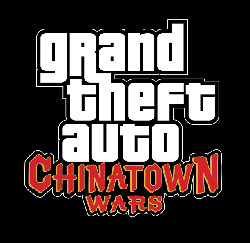
Odds are you’ve already played Grand Theft Auto: Chinatown Wars. Perhaps you haven’t opened the box, popped out the game card and moved your Nintendo DS’ Power switch to “on,” per se, but trust me: you’ve played the game. And depending on your point of view, your attitude toward the GTA franchise, that may or may not be a bad thing.
This time around you play as Huang Lee, a self-described “pampered little snot” who has to fly to Liberty City, all the way from Kong Kong, for two reasons. One, your father, who just so happens to be your family’s head, was just killed and you’d like to find out why; and two, to deliver a family keepsake— a sword—to your uncle. Fair enough. Only when your plane lands, and totally out of nowhere, you’re ambushed; it’s a scene right out of 2002’s Vice City. The men who ambushed you then dump your presumed-dead body into a nearby body of water; they also steal the sword you were supposed to deliver. So, to recap: you’ve flown halfway across the world, only to be ambushed and left for dead. Yes, it’s GTA, all right.
The plot—I can’t name too many people who appreciate the GTA games for their plot, despite the fact that GTA IV was one of last year’s better written games—then concerns your attempts to figure out what the hell is going on. Why were you ambushed, and by whom—why? And so on. Keep in mind that, in form, it’s a portable game, one played on a (well, two) tiny screen, and, in function, an action game; don’t go into it expecting The Great American novel, but, rather, do go into it expecting something infinitely more intricate than the shovelware nonsense you find on the DS.
The game’s developers, Rockstar Leeds (the same guys who developed the PSP’s Liberty City Stories and Vice City Stories), try to preserve the game’s GTA-ness while taking into account the realities of DS gaming. That’s why the game is presented the way it is, with an almost-overhead view, one that’s certainly reminiscent of the series’ pre-GTA III installments. It is important to note, however, that the game isn’t 2D. All objects have depth, and the bold-colored outlines, found in so many cartoons today, help the graphics “pop out” more, if that makes any sense at all. Put another way, if you were to magically reposition the camera so that it’d be more like GTA IV’s, then you’d see Liberty City just as you did on the Xbox 360 (or PS3). The developers went with this almost-overhead view as a concession to playing on such a tiny screen(s); you see more of the city this way, and more clearly.
The game’s radio stations, so much a part of the GTA universe, are limited by the hardware. You won’t find any Nas songs here, though I’ll be damned if I didn’t recognize Deadmau5‘s logo in the radio station selector.
Control wasn’t really an issue for me, but then I may be more forgiving than others in this regard. The D-pad, as you might expect, moves Huang up, down, left and right; hold the B button to run. You aim using the the R button, and cycle between targets using the L button., then use A to shoot. No, it’s not exactly analog control, but then again control has never been one of the series’ strongest aspects.
I hope you weren’t expecting an IGN-esque 9.265333333 here. As you’ll recall, I think assigning numbers to game reviews—I wouldn’t even consider this a review, more of a “here’s what’s up” sort of thing—is silly, and contributes to Metacritic, which is also terrible. All I can say in closing is that if you’re a big fan of the series you’ll no doubt enjoy the game. Those of you who subscribe to the “been there, done that” line of thinking probably won’t miss it. But outside of Chrono Trigger and maybe Final Fantasy IV (I am, or at least was, very much into RPGs), you probably can’t find a better DS game. So there’s that.